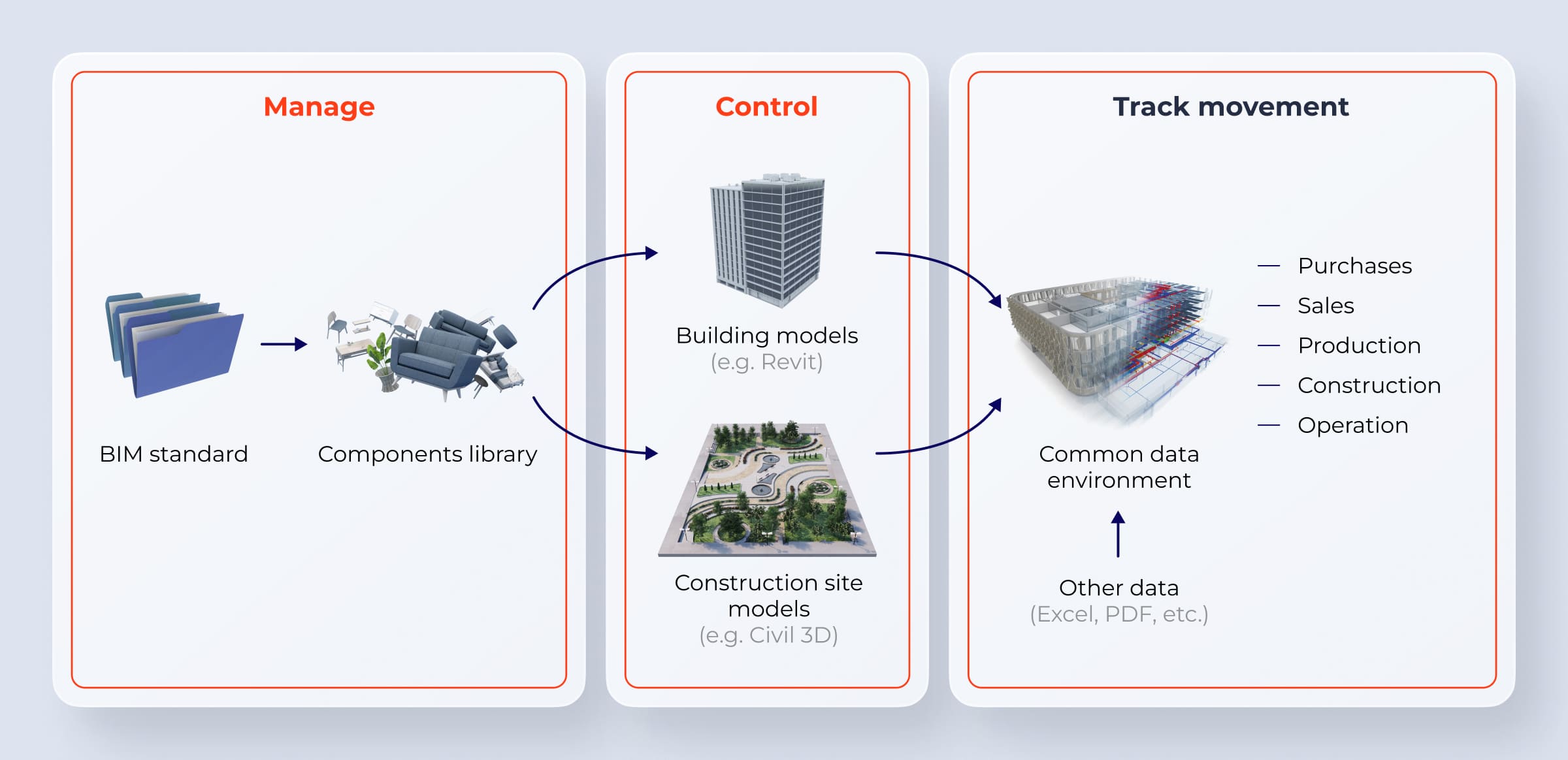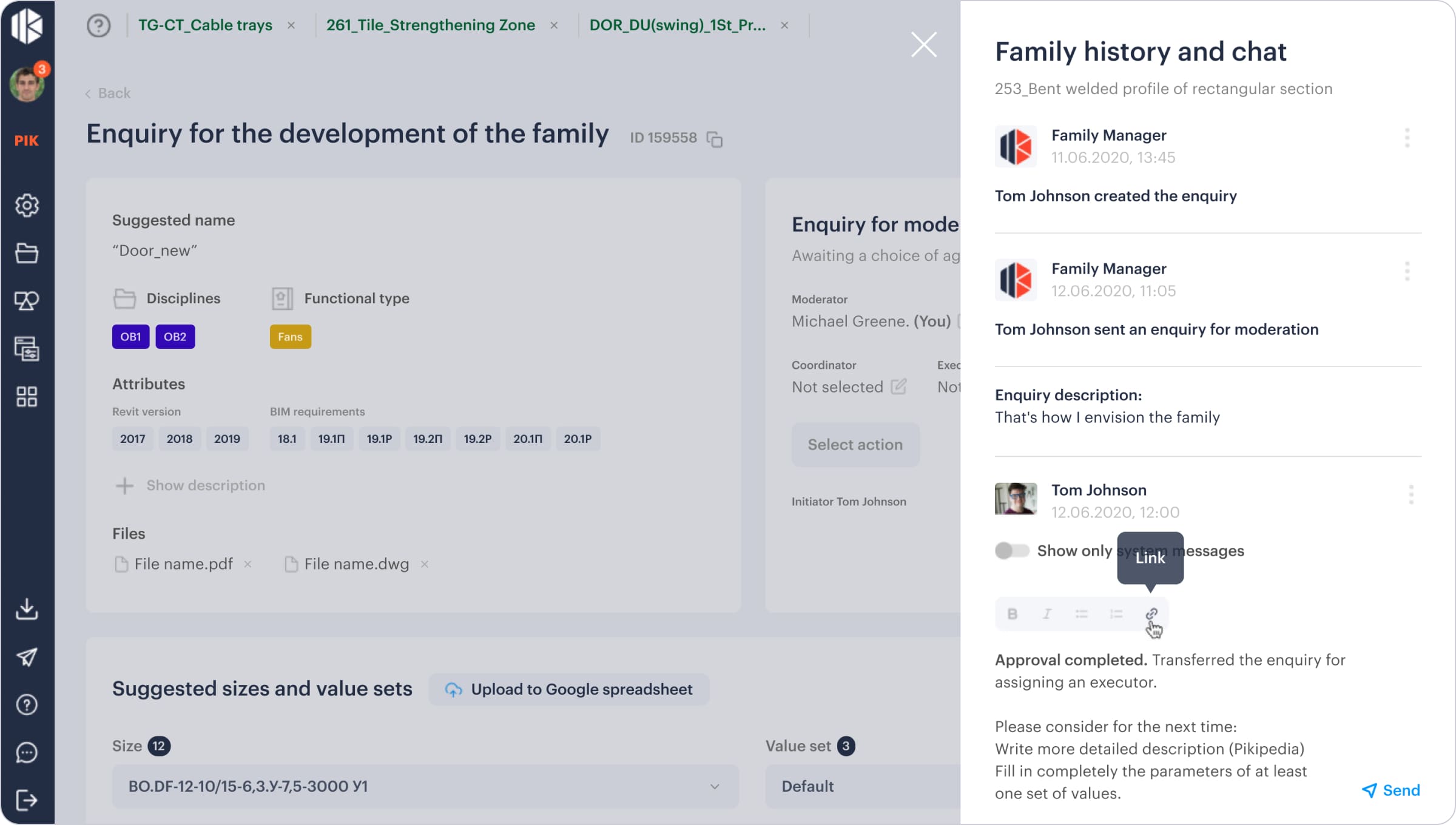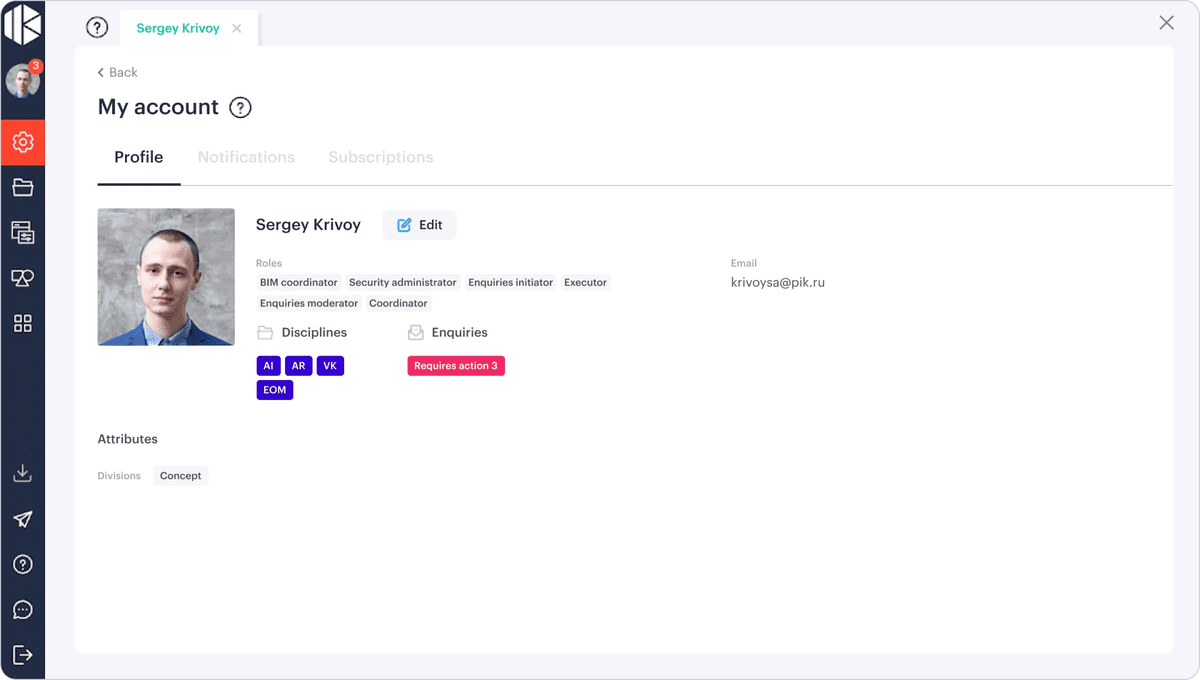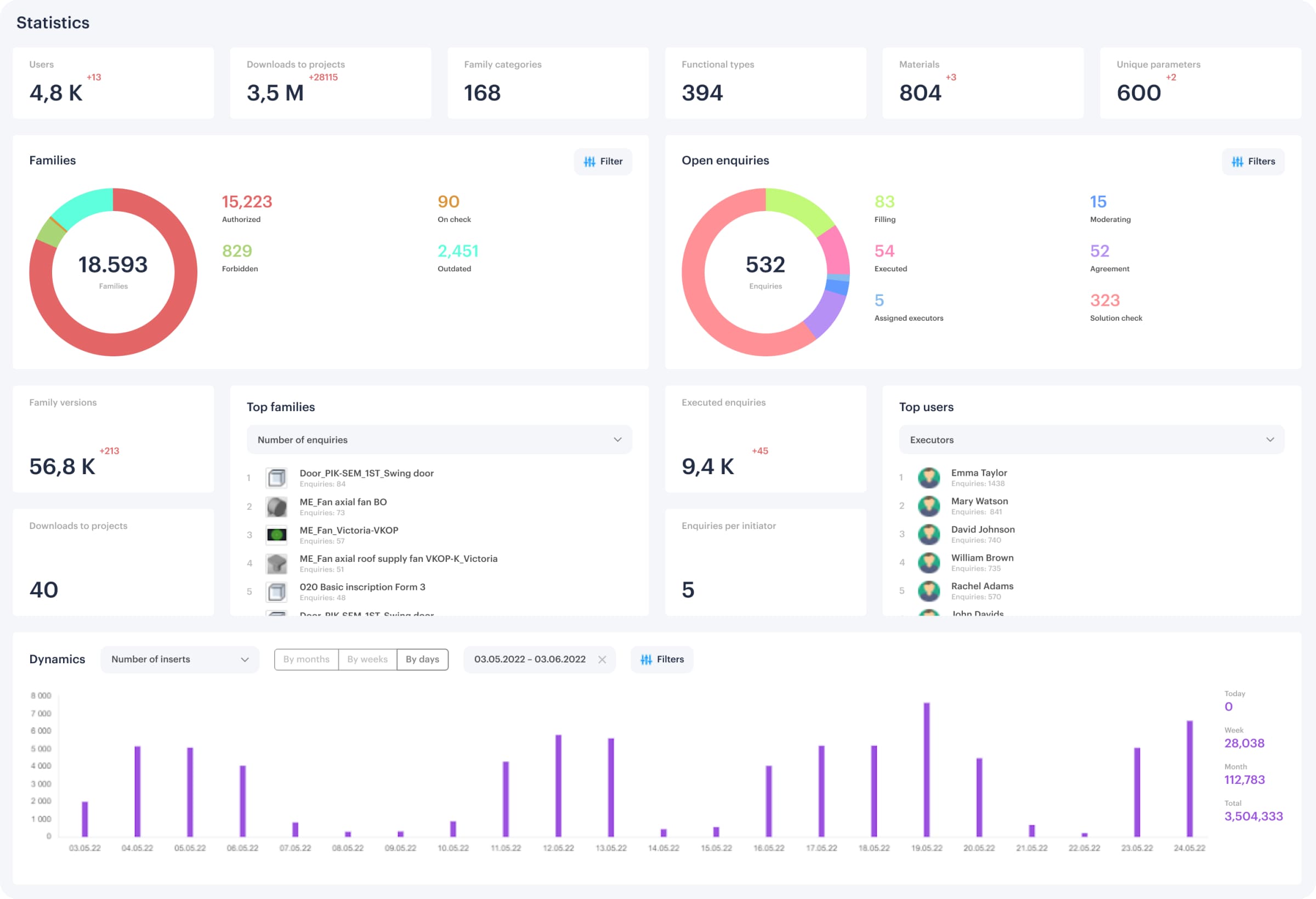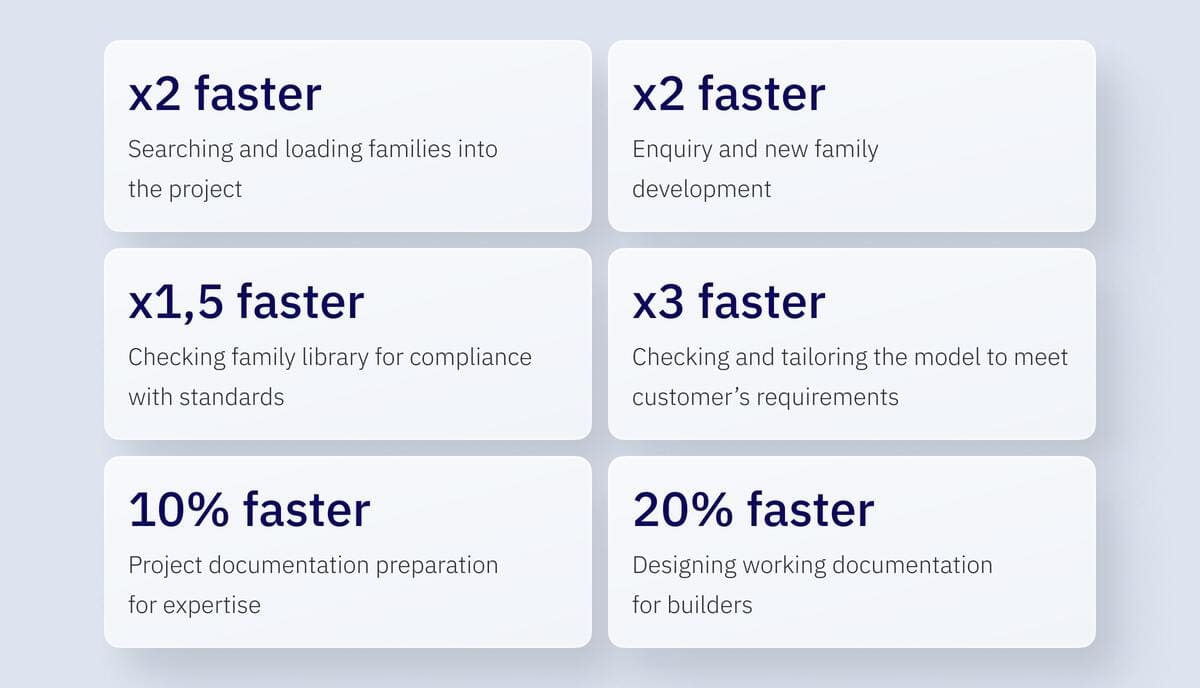Customer
PIK – a large real estate developer with over $5 billion revenue
BIM components libraries
2,500 experts at PIK work with BIM models. Each member of the design team creates and maintains their own BIM model as a part of the larger “central model” in accordance with the corporate standard.
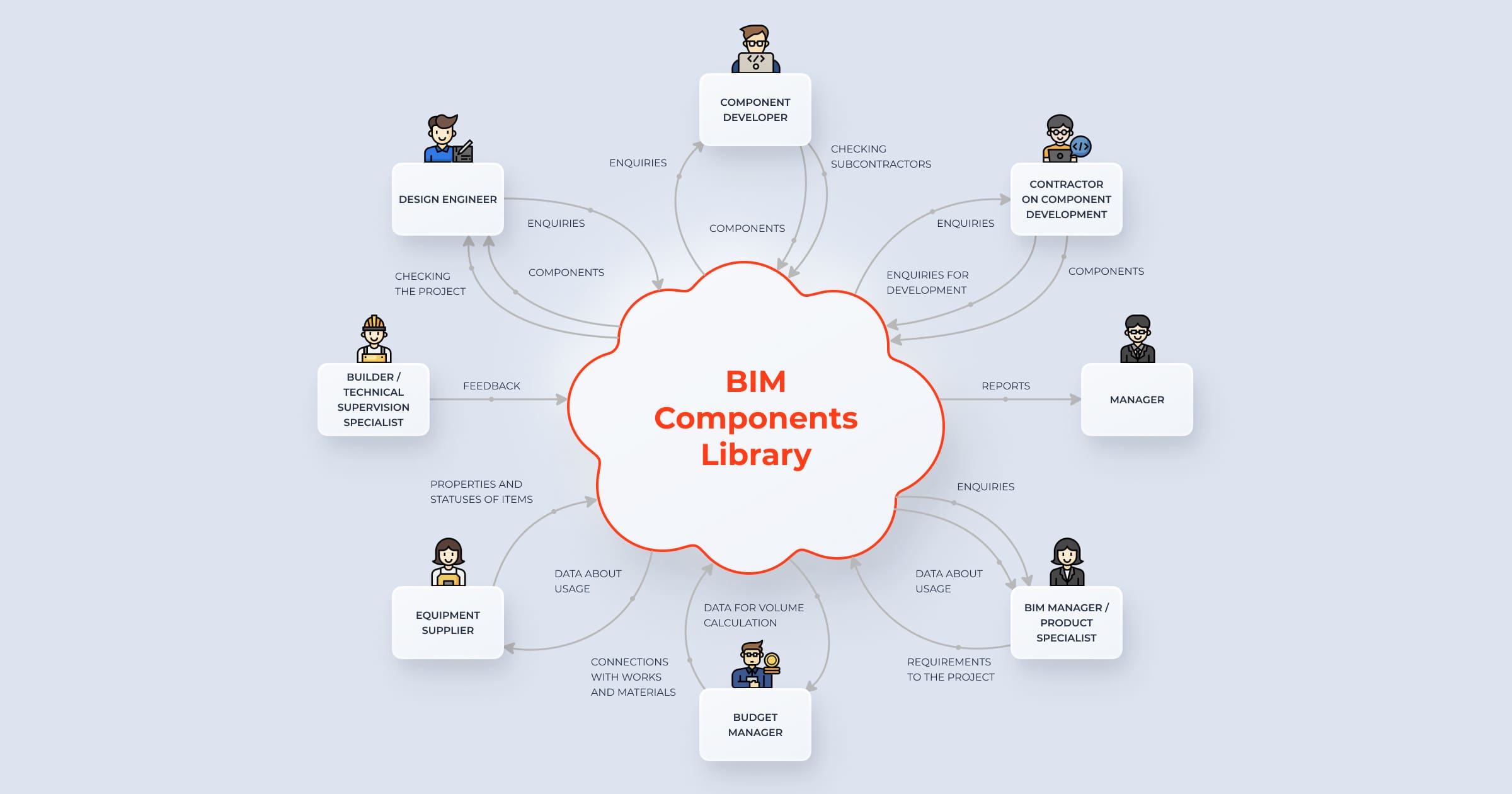
BIM libraries contain virtual models of real construction elements, such as walls, doors, windows, columns, and other building parts. Users can find information about the sizes, materials, structure, and functional properties of these objects. BIM library is used throughout the entire lifecycle of the project, from design to residential maintenance.
